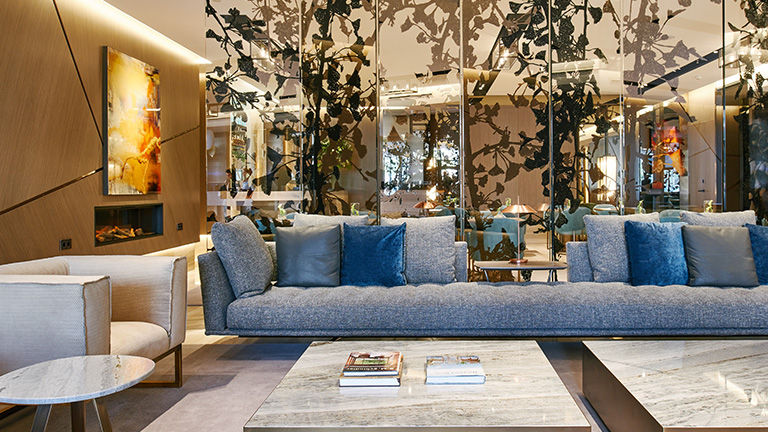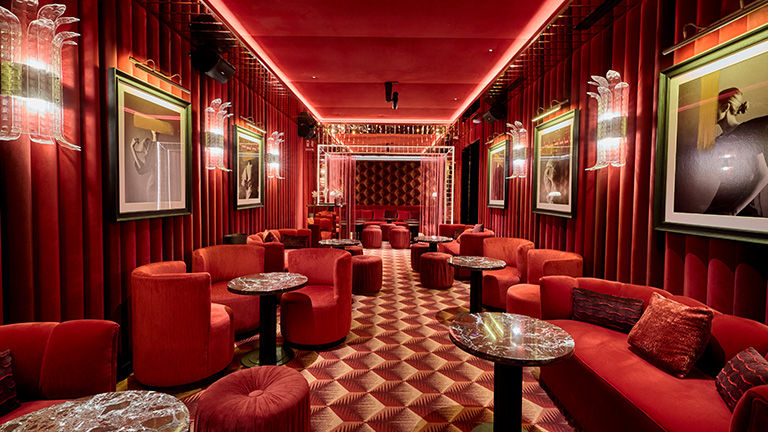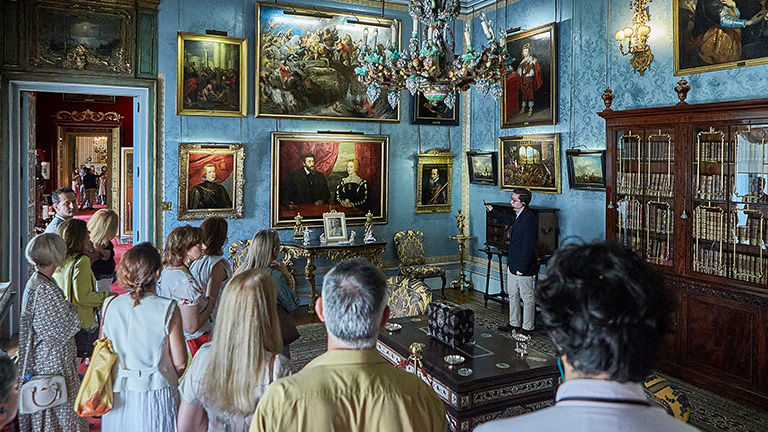Madrid, Spain’s second-most-visited city after Barcelona, is home to 3.4 million people of more than 180 different nationalities. Cosmopolitan and diverse, the capital contains a wealth of cultural and natural attractions, and one of the continent’s most celebrated food and drink scenes.
Still, in recent years, its population has decreased by nearly 35,000 people, with many, especially millennials, seeking the wide-open spaces and lower cost of living of small towns. Now, Madrid is in the midst of an image overhaul meant to attract new visitors and residents, with a singular promise: This isn’t your grandma’s capital city. Between now and mid-2023, guests can visit freshly renovated historic places, new museums, the city’s first UNESCO World Heritage Site and an array of hotels and chef-driven restaurants.
We’re trying to build a new Madrid ... we need a good balance between tourism and the citizen.
“We’re trying to build a new Madrid,” said Hector Coronel, CEO of the Madrid Tourism Board. "We recognize that we need a good balance between tourism and the citizen.”
Refurbished Plazas
Madrid’s 13 plazas, or urban squares, are hubs for socializing and dining. They’re also centers for community celebration, particularly during the holidays. So, it's no surprise that serious money is being invested in rejuvenating these spaces.
Following a four-year, $85 million renovation, the Plaza de Espana, one of Spain’s largest, reopened late last year, with live plantings, lighting and improved pedestrian access. From above, the new design looks a bit like an ice cream cone, with a broad circular section — home to weekly food vendors and pop-up markets — that tapers at the monument to Miguel de Cervantes, the author of Don Quixote. Visitors can now walk between Gran Via, the Nubian Temple of Debod, Plaza de Oriente, Sabatini Gardens, Campo del Moro Gardens and Madrid Rio Park.
Renovations are underway at Puerto del Sol, a central square that sits at the confluence of some of Madrid’s most historic and busiest streets. In addition to a new glass-walled commuter train station and live plantings, the city will improve pedestrian access by relocating two iconic statues of King Carlos III and a bear sniffing a strawberry tree. Puerto del Sol is scheduled to reopen in time for eating the “12 grapes of luck” as the clock on the Royal Post Office rings in the new year.
New Hotels and Restaurants in Madrid
Four Seasons Hotel Madrid, which opened during the pandemic, has so far flown under the radar. Located on the corner of Calle de Sevilla and Calle de Alcala, the hotel is an architectural stunner that pays homage to the building’s historic roots, with plenty of swanky modern touches. It also features a 1,500-piece collection of original art, and a rooftop brasserie and bar from Andalusian star chef Dani Garcia.
The newly opened Thompson Madrid, on Plaza del Carmen along Madrid’s high-end “Golden Mile,” has 174 luxury rooms and suites with a sleek, mid-century aesthetic. Its food and beverage venues are managed by premium brand Grupo La Ancha, and include a rooftop terrace bistro and a speakeasy-style cocktail bar.
Mid-priced Ocean Drive opened its doors earlier this year on Plaza de Isabel II, opposite the Teatro Real opera house. A four-star hotel, it has 72 spacious, modern rooms (some with private terraces), as well as a restaurant and rooftop bar and sun deck.
VP Plaza Espana, which overlooks the namesake plaza, is ideally positioned to capture both executive travelers and vacationers. It has 214 rooms and suites, a fitness center, a spa and a rooftop pool, plus 15,000 square feet of flexible conference rooms. Some of the best views in the city are available from the hotel’s upper floors and Ginkgo Restaurant & Sky Bar.
 VP Plaza Espana is a new hotel option in Madrid.
VP Plaza Espana is a new hotel option in Madrid.
Credit: 2022 Javier Peñas/Madrid DestinoValue accommodation Hotel DWO Yuste Alcala has an easygoing, minimalist vibe, with an outdoor snack and cocktail bar. The Social Hub Madrid, about 10 minutes from the Royal Palace, was created for students and long-stay visitors. It offers furnished rooms with a private bath, and access to a variety of communal spaces, a gym, laundry facilities and a bike-share program.
Madrid has welcomed a number of new eateries from prominent international chefs. These include Robuchon, from the restaurant group founded by late, lauded French chef Joel Robuchon. The interplay between the “mathematics of spices” and typical Spanish ingredients is the focus of NAMAK, [https://namak.madrid/] by Nadeem Siraj.
Meanwhile, Dabiz Munoz, named the world’s top kitchen alchemist two years running by the Best Chef Awards, helms Ravioxo, a pasta- and dough-themed restaurant within the El Corte Ingles complex on Paseo de la Castellana.
 Robuchon is a new eatery from the restaurant group founded by chef Joel Robuchon.
Robuchon is a new eatery from the restaurant group founded by chef Joel Robuchon.
Credit: 2022 Madrid DestinoAnd Nobu Madrid, opening in 2023, will bring the American icon to Spain in the form of a luxury hotel with a three-level restaurant and bar.
New Attractions
Liria Palace, the circa-1770 palatial private residence of the Alba family and one of the most architecturally important buildings in the city, opened just prior to the pandemic, only to shut down again until this year. The family’s extensive art collection contains paintings, sculpture, tapestries, documents and personal effects. Like the Prado, it’s heavy on masters such as Peter Paul Rubens, Francisco Goya, El Greco and Diego Velazquez. Unlike Madrid’s best-known art museum, Liria Palace is rarely beset by crowds.
 Liria Palace was once the palatial private residence of the Alba family.
Liria Palace was once the palatial private residence of the Alba family.
Credit: 2022 Madrid DestinoAs hard as it is to believe, Madrid didn’t have any UNESCO World Heritage sites until last year. This has been rectified with the designation of the “Landscape of Light,” comprised of the tree-lined, scenic Paseo del Prado and El Retiro Park. Paseo del Prado stretches from Atocha Plaza to Plaza de Cibeles and contains dozens of historic buildings and monuments, plus the entrance to the massive Royal Botanical Gardens. The 300-acre El Retiro is one of Europe’s prettiest urban parks, with 15,000 trees, five gardens, a large lake, dozens of sculptures and the spectacular Glass Palace.
Look for two major openings next year, as well. The Gallery of Royal Collections, on the Plaza de la Almudena, will highlight the history of the Spanish monarchy, from the 1400s through Juan Carlos I, through its art collections. Following a seven-year facelift, Santiago Bernabeu Stadium will usher in a new era of championship soccer for home team Real Madrid. The 85,000-seat arena will also be used for other sporting events and for concerts.